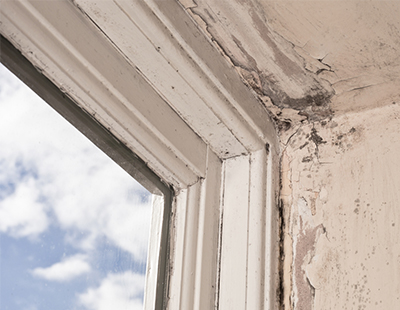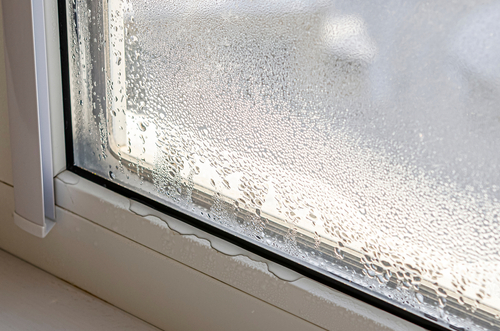It’s a sorry state of the world, and there’s one hidden factor that no one has thought about: the worst winter yet for mould.
Why is mould so bad?
Mould, found in various forms across homes, is a danger to human health. Not only can mould itself cause serious ill health, but it can also worsen the symptoms of existing lung diseases, such as asthma, and allergies, such as hay fever. There’s also links to mould worsening memory problems, and it affects those with cancer or weakened immune systems.
It also has a greater affect on the young and old in society, as their frailer lungs and bodies can’t handle the burden that mould brings.
What causes mould?
Mould is caused by one of three things: rising damp, penetrating damp and condensation.
Rising damp is where the damp comes from underneath the home, whether due to poorly laid damp proof, foundation that wasn’t allowed to dry or another problem. It can cause serious problems if not addressed quickly and can lead to mould that’s impossible to remove.
Penetrating damp is where leaks allow water into a property, whether it’s a broken roof, flat roof that isn’t draining properly, faulty guttering or plumbing that doesn’t work as it should. Penetrating damp is the most common type that is caused by a building defect, rather than rising damp.
Condensation is very common, and happens due to a variety of things, whether steam trapped in a kitchen due to lots of cooking, a lovely hot bath, drying very damp clothes on radiators, poor ventilation, lack of heating and more.
The issue with landlords is that it’s hard to know whether the issue falls with tenant’s lifestyle habits or the poor ventilation of the building.
When is mould the landlord’s responsibility?
Mould becomes the landlord’s responsibility when it is due to building defects over lifestyle habits. Under the Landlord and Tenant Act of 1985, landlords must repair defects and structural issues that cause damage to buildings. As mould and other damp related problems can often be linked to structural issues, landlords must inspect and repair as necessary.
A landlord, if mould is found, will need to provide a mould remediation service to ensure the home is habitable. Under the Homes (Fitness for Human Habitation) Act 2018, homes must be in a habitable state throughout the tenancy, and repeated mould is a reason why a home would not be habitable. Early prevention is the key.
How you can spot mould
If a tenant has raised concerns of damp, or has said there was mould, then it the landlord’s responsibility to investigate within 14 days of the tenant’s concern.
Here’s how to spot mould:
- The tenant has a lingering cold, or worsening ill health, and has only had this since they noticed the damp problem. This can be hard to quantify, as colds and ill health do also get worse in winter;
- When you walk in the property, you notice a damp or mustiness in the air. As the property owner, regular inspections are important as you will need to ensure that you can notice the difference in the smell in the air;
- There are new damp spots that have appeared, especially those near plumbing, on exterior walls, or coming from areas near ceiling joints. There should be pre-tenancy photos, and ones that can be compared as sent to you by the tenant;
- Homes in flood plains, or those that have flooded in the past, should be regularly inspected for mould, especially if the area that the flood happened in was harder to clean or dry;
- There is a leak from plumbing, or from the ceiling. Water through the ceiling, especially in blocks of flats, should be a sign of concern as there may be hidden mould in the roof that you cannot see.
Preventing mould in rental properties
While mould will sometimes develop, regardless of the mitigatory actions you put in place. However, there are some things you can do.
- Open windows throughout the house at least once a day. Good ventilation is key to reduce mould, as it creates airflow, which moves mould spores around the house, and replaces dirty air with clean air;
- When cooking, request the ventilation fan be used or windows opened. This ensures trapped steam and cooking warmth leaves the house, rather than being trapped in;
- Be selective with where you place curtains. Curtains in bathrooms or in kitchens can easily harbour mould. It may be better to use blinds that can be cleaned or provide alternative window coverings;
- Provide a dehumidifier. Domestic dehumidifiers aren’t expensive, and can be used in bathrooms or kitchens, and indeed other rooms that harbour damp, to reduce the water content in a room. They should be drained and cleaned regularly but are a highly effective way.
* Stuart Kerr is managing director of Restorations UK *
Want to comment on this story? Our focus is on providing a platform for you to share your insights and views and we welcome contributions.
If any post is considered to victimise, harass, degrade or intimidate an individual or group of individuals, then the post may be deleted and the individual immediately banned from posting in future.
Please help us by reporting comments you consider to be unduly offensive so we can review and take action if necessary. Thank you.




.jpg)










.jpg)






%20(002).png)



.jpg)
.jpg)






Join the conversation
Jump to latest comment and add your reply
Education, education, education!
Until someone finds a way to convince tenants that ventilation and communication is the solution there will be mould problems.
In their pursuit to save money tenants shut trickle vents, refuse to use extractor fans and never open windows. They don't understand that simply breathing, cooking and bathing produces many litres of moisture every day. If that moisture can't escape it condenses on the walls and forms mould. It doesn't matter how much we ask them to use extractors or how many condensation control leaflets we provide them with they will see an article somewhere about draft proofing or turning off every appliance and instantly forget about the importance of ventilation.
The other issue is failure to report small maintenance issues. Good landlords would far rather know about any repairs that are required before the property suffers damage. Minor water ingress or leaks can lead to dry rot requiring tens of thousands of pounds of repairs. Media reports of people being evicted for mentioning repairs have caused many completely avoidable problems for good landlords. We want our houses to be in the best possible condition and certainly won't evict tenants for helping us to keep them that way. We are far more annoyed when tenants eventually tell about something and then mention they noticed it over a year ago. Even when we pay for plumbing and drainage policies tenants are reluctant to notify us about leaks.
I've even had tenants tape over extractor fan vents and then complain about damp and mould .
I find good quality anti-mould paint is always worth it. It costs about £65. for 5 litres / £12 per litre, even from the point of view of do the job because there’s a bit of body in it and covers well, it’s durable and you can be wash it down. However, I have had Tenants that took it on themselves and decided to change the colour, so they visit local DIY Store and buy 10 litres for £15 / £20 less than £2 per litre and put it over the good pain then you can end up with mould that you didn’t have before, try washing it down and it comes off on the cloth, you can’t allow for what other do.
Please login to comment